
The prime minister of India is the head of government of the Republic of India. Executive authority is vested in the prime minister and his chosen Council of Ministers, despite the president of India being the nominal head of the executive. The prime minister has to be a member of one of the houses of bicameral Parliament of India, alongside heading the respective house. The prime minister and their cabinet are at all times responsible to the Lok Sabha.

Rahul Rajiv Gandhi is an Indian politician and a member of the Indian Parliament who represents the constituency of Wayanad, Kerala, in the Lok Sabha. He previously represented the constituency of Amethi, Uttar Pradesh. He is a member of the main opposition party, the Indian National Congress, and was the party president from December 2017 to July 2019. Gandhi is the chairperson of the Indian Youth Congress, the National Students Union of India and a trustee of the Rajiv Gandhi Foundation and Rajiv Gandhi Charitable Trust. He is the son of the former Prime Minister of India, Rajiv Gandhi.

Janpath, is one of the main roads in New Delhi. It starts out as Radial Road 1 in Connaught Place, adjacent to Palika Bazaar, and runs north–south perpendicular to Kartavya Path. Originally called Queen's Way, it was an important part of Lutyens' design of the administrative New Delhi, upon the inauguration of new capital of India in 1931. Janpath Market is one of the most famous markets for tourists in New Delhi. The market essentially is a long line of boutique stores selling products which are hard to find in the malls and multi-chain stores of the city. The long line of boutiques is for budget travellers and shoppers, buyers of handicrafts and garments, curio and numerous Indian-style fast-food places. It was created during the Construction of New Delhi.
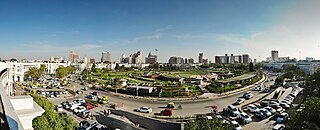
Connaught Place, officially known as Rajiv Chowk, is one of the main financial, commercial and business centres in New Delhi, Delhi, India. It houses the headquarters of several noted Indian firms and is a major shopping, nightlife, and tourist destination in New Delhi. As of July 2018, Connaught Place was the ninth most expensive office location in the world with an annual rent of $1,650 per square metre ($153/sq ft).
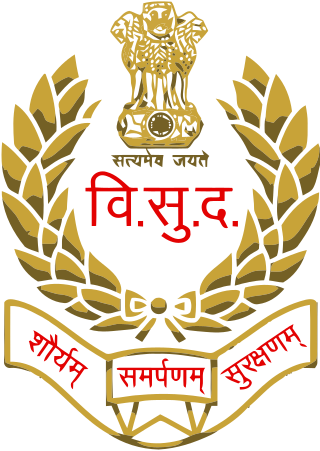
The Special Protection Group (SPG) is an agency of the Government of India whose sole responsibility is protecting the Prime Minister of India and, in some cases, his or her family. It was formed in 1988 by an Act of the Parliament of India. The SPG protects the Prime Minister at all times both in India and abroad, as well as the Prime Minister's immediate family members residing with them at their official residence. Family members, however, may decline security.

Raisina Hill, often used as a metonym for the seat of the Government of India, is an area of New Delhi, housing India's most important government buildings, including Rashtrapati Bhavan, the official residence of the President of India on a citadel and the Secretariat building, housing the Prime Minister's Office and several other important ministries. The hill is seen as an Indian acropolis with Rashtrapati Bhavan as the Parthenon.

10, Janpath is a public-owned house on Janpath. At the time of Rajiv Gandhi's assassination in 1991, while he was campaigning for a second term as Prime Minister of India, 10, Janpath was his official residence, although he lived at 7, Lok Kalyan Marg while he was prime minister. 10, Janpath remains the residence of his widow Sonia Gandhi, who is a former President of Indian National Congress party. The national headquarters of Indian National Congress (INC) is right behind it on 24, Akbar Road. It was the residence of India's second prime minister, Lal Bahadur Shastri (1964–1966) and where his body lay in state on 11 January 1966. Today his biographical museum, Lal Bhadur Shastri Memorial is situated at 1, Motilal Nehru Place, adjacent to the complex.

Safdarjung Airport is an airport in New Delhi, India, in the neighbourhood of the same name. Established during the British Raj as Willingdon Airfield, it started operations as an aerodrome in 1929, when it was India's second airport after the Juhu Aerodrome in Mumbai. It was used extensively during the Second World War as it was part of the South Atlantic air ferry route, and later during Indo-Pakistani War of 1947. Once situated on the edge of Lutyens' Delhi, today, it has the entire city of New Delhi around it. It remained the city's main airport until 1962, when operations shifted to Palam Airport completely by the late 1960s, as it could not support the new bigger aircraft such as jet aircraft.

Lutyens' Delhi is an area in New Delhi, India, named after the British architect Sir Edwin Lutyens (1869–1944), who was responsible for much of the architectural design and building during the period of the British Raj, when India was part of the British Empire in the 1920s and 1930s and 1940s. This also includes the Lutyens Bungalow Zone (LBZ).
Safdarjung Road is a main road in New Delhi, India, named after the 18th century Tomb of Safdarjung near it. At the north end, the road stretches from the junction of the Teen Murti Marg, Akbar Road, Rajaji Marg and Lok Kalyan Marg, which is a roundabout. At the south end it stretches up to the junction of Prithviraj Road, Tughlaq Road and Sri Aurobindo Marg. There is a single junction/crossing at the Kemal Atatürk Marg and Dr APJ Abdul Kalam Road section.
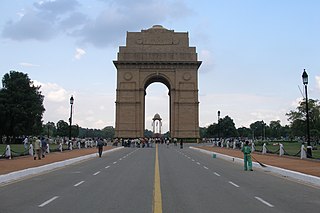
Akbar Road is a main road, in central New Delhi, India. At the north-east end it stretches from the India Gate roundabout. At the south-west end it stretches up to the Teen Murti roundabout. The roundabout leads to Lok Kalyan Marg, Rajaji Marg, Teen Murti Marg and Safdarjung Road. It is also the road on which India's political party, Indian National Congress, has its head office.
Lok Kalyan Marg, formerly Race Course Road, is a road in New Delhi, India. It is located south of Central Delhi. The nearest Delhi Metro station is Lok Kalyan Marg station.
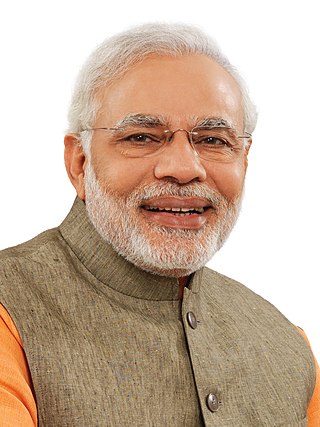
General elections were held in India in nine phases from 7 April to 12 May 2014 to elect the members of the 16th Lok Sabha. With 834 million registered voters, they were the largest-ever elections in the world until being surpassed by the 2019 elections. Around 23.1 million or 2.7% of the total eligible voters were aged 18–19 years. A total of 8,251 candidates contested the 543 elected Lok Sabha seats. The average election turnout over all nine phases was around 66.40%, the highest ever in the history of Indian general elections.

The Lok Kalyan Marg metro station is located on the Yellow Line of the Delhi Metro.
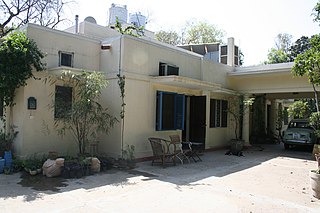
Lutyens Bungalow Zone or LBZ is the area spread over 2,800-hectare area in Lutyens' Delhi, with bungalows (houses) for government ministers, officials and their administrative offices, since the British Raj. The zone stretches up to Lodhi Road in the south.

Meenakshi Lekhi is an Indian politician and the current Minister of State for External Affairs and Culture of India from 7 July 2021. She is a Member of Parliament from New Delhi Parliamentary constituency in the 16th and 17th Lok Sabha from the Bharatiya Janata Party. She is also a lawyer in the Supreme Court of India.
The Indian National Congress (INC) is one of the two major political parties in India. The prominent members of the party are the president Sonia Gandhi, vice-president Rahul Gandhi, former prime minister Manmohan Singh and Priyanka Gandhi. INC took part in the elections alongside other members of the United Progressive Alliance. On the fourth anniversary of the second United Progressive Alliance government, the INC announced that its campaign for the election would be led by Prime minister Manmohan Singh, party chairperson Sonia Gandhi, and general secretary Rahul Gandhi.
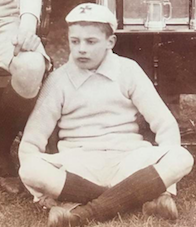
Robert Tor Russell (1888–1972) was a British architect. In his position as Chief Architect to the Public Works Department of the Government of India, he is primarily associated with the development of the city of New Delhi in the early 1930s. He designed some of the city's most notable buildings and was the architect of Connaught Place, the financial centre of the new capital. Russell also served with distinction during the First World War, and later, after retiring from India, became a civil servant for the British Government.
















